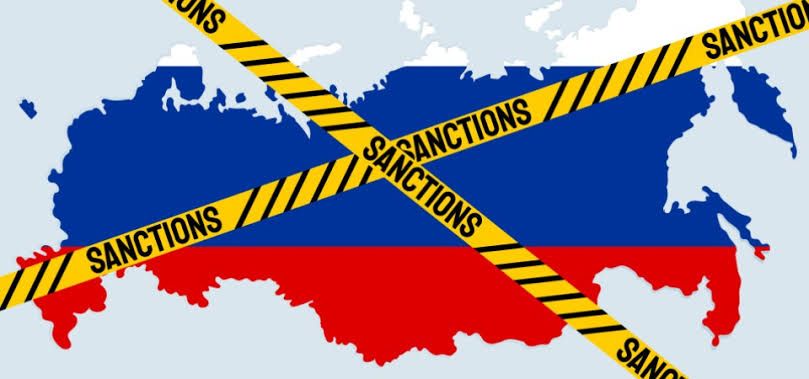
- The emergence of a legal mechanism for the confiscation of frozen Russian assets in the United States appears likely, with reports suggesting a potential realization by February 2024.
- While concerns about a collapse of the dollar or a mass investor exodus loom, the nuanced approach may mitigate these risks, providing policymakers with an additional tool for addressing geopolitical challenges.
The issue of confiscating Russian frozen assets is in the spotlight again, with the Joe Biden administration reportedly supporting bills aimed at enabling such actions. This article provides a detailed analysis of the recent developments surrounding these bills, their bipartisan nature, potential implications, and the likelihood of their passage into law.
Nature of the Russian Foreign Assets
Similar to other central banks, the Russian central bank placed a portion of its gold and foreign exchange reserves in easily accessible assets such as major currencies, gold, and government bonds, with about half stored in the West. Approximately $300 billion of these assets have been confirmed as frozen in Western countries, out of a total of $612 billion in Russian foreign currency and gold reserves.
Although the central bank hasn’t provided a detailed breakdown, at the beginning of 2022, it held around $207 billion in euros, $67 billion in U.S. dollars, and $37 billion in British pounds. Additional holdings included $36 billion in Japanese yen, $19 billion in Canadian dollars, $6 billion in Australian dollars, and $1.8 billion in Singapore dollars, with about $1 billion in Swiss francs. These assets were primarily invested in foreign securities, bank deposits, and nostro correspondent accounts, with significant bond holdings in various countries.
Russia’s gold reserves were kept within the country, and investments in yuan were held in China. The central bank didn’t use complex structures for asset ownership, making it relatively easy to identify the frozen assets, including those belonging to private Russian citizens.
Nature of the Proposed Bill
Recent confiscation bills, namely S. 3359 and H.R. 6491 have been introduced in both the U.S. Senate and the House of Representatives, signalling a bipartisan interest. Sponsored by Democrat Sheldon Whitehouse and Republican Joe Wilson, respectively, these bills share a significant number of cosponsors from both parties. The bipartisan support enhances the probability of passage, albeit acknowledging the inherent challenges in the legislative process.
Both bills grant the President and the Administration the authority to extrajudicially seize assets of individuals subject to property blockades under the IEEPA Act of 1977. This includes those violating U.S. export control regulations. Notably, the confiscated assets could be transferred to Ukraine, adding a diplomatic and financial dimension to the proposed measures.
While bipartisan support increases the bill’s chances of passage, historical data indicates that only approximately 5% of bills become law. Moreover, many post-SWOT (Sanctions With Objective Test) sanctions are typically implemented through executive decrees rather than federal laws, providing the administration with greater flexibility. The ambiguity surrounding the likelihood of these bills becoming law underscores the complexity of the legislative process.
Speculation arises regarding the timing of the potential emergence of a legal mechanism for confiscation. The need for impactful sanctions moves by the next anniversary, coupled with the possibility of addressing Ukraine’s funding issues, suggests a timeline potentially around February 2024. Political capital may be built by framing the action as aiding Ukraine with Russian funds rather than relying on U.S. resources, a strategy that could resonate in Congress.
The new mechanism, if implemented, might take the form of a federal law with flexibility, giving the President discretionary authority rather than mandating confiscation. The impact on investors remains uncertain, with the scale of application being a decisive factor. Isolated confiscations may not trigger an investor exodus, but widespread seizures could prompt a more serious reconsideration, particularly among Chinese investors amid escalating U.S.-China relations.
Russian Response over Western fear of confiscation
There are concerns among Russian officials about the potential confiscation of assets, with some warning that such actions contradict principles of free markets. The protection of private property has been emphasized, and there are suggestions that foreign investors’ assets in special “C” accounts in Russia could face a similar fate if Russian assets are seized. The exact amount in these accounts is unclear, but officials have mentioned it being comparable to the $300 billion frozen in Russian reserves.
Finance Minister Anton Siluanov noted significant funds in the “C” accounts, and Kremlin spokesman Dmitry Peskov stated that Russia would challenge any confiscation in court, emphasizing reciprocity in response to asset seizures.
Conclusion
In conclusion, the emergence of a legal mechanism for the confiscation of Russian frozen assets in the United States appears likely, with arguments suggesting a potential realization by February 2024.
However, challenges persist, including the crude nature of existing bills and limited time for passage. The outcome will hinge on the flexibility of the enacted measures and their application. While concerns about a collapse of the dollar or a mass investor exodus loom, the nuanced approach may mitigate these risks, providing policymakers with an additional tool for addressing geopolitical challenges.
(Srijan Kumar is currently pursuing a PhD in South Asian studies from Delhi University. He is a writer and a columnist for various digital media houses. Opinions expressed are the author’s own)
